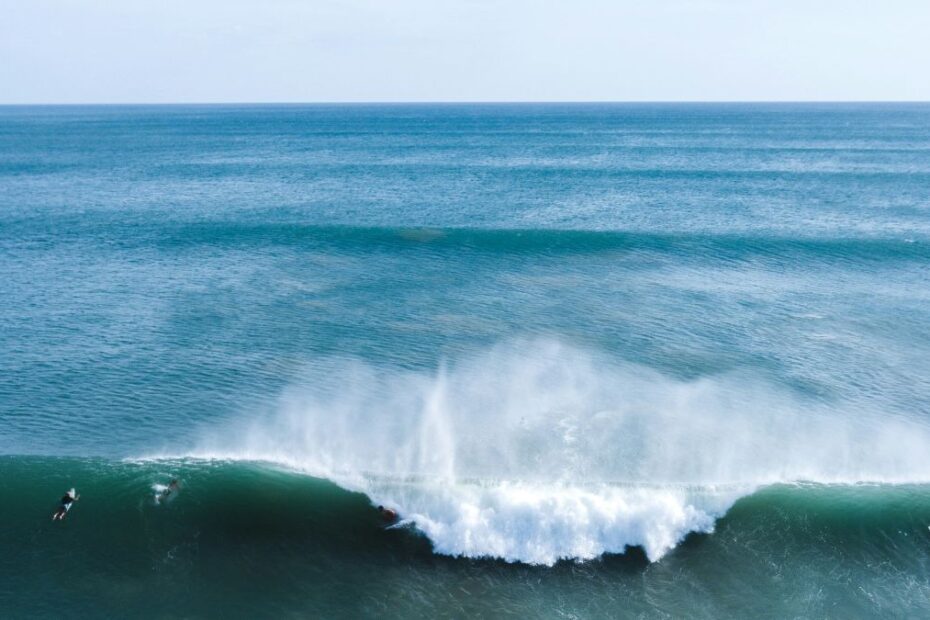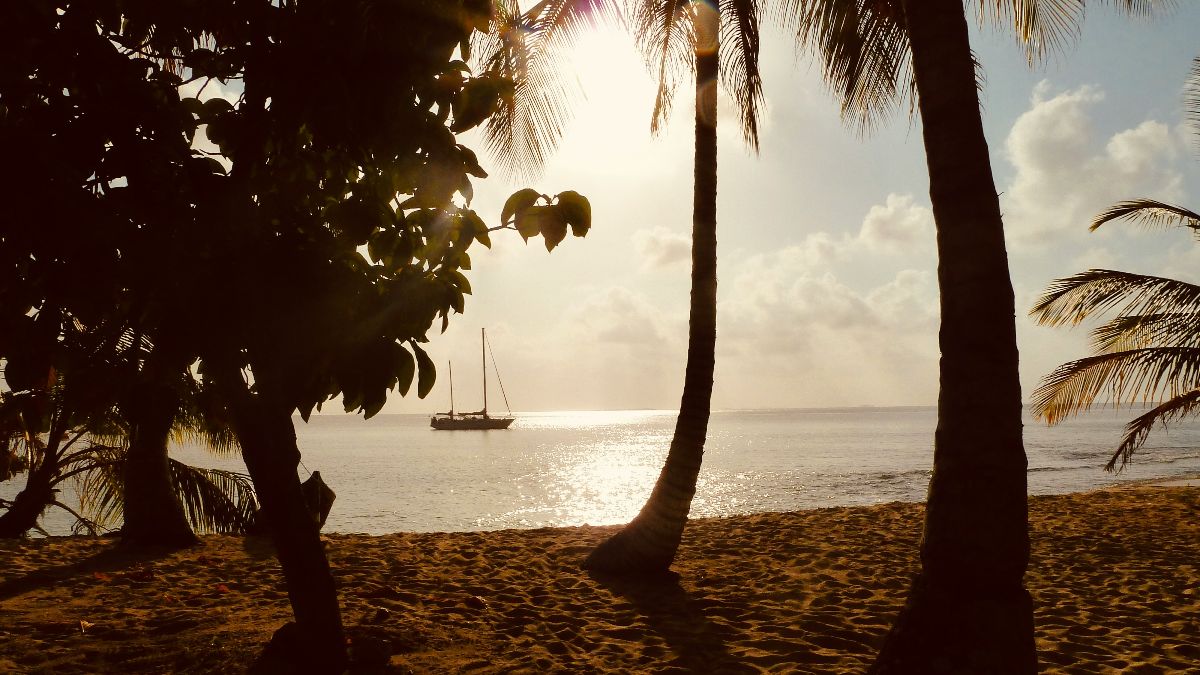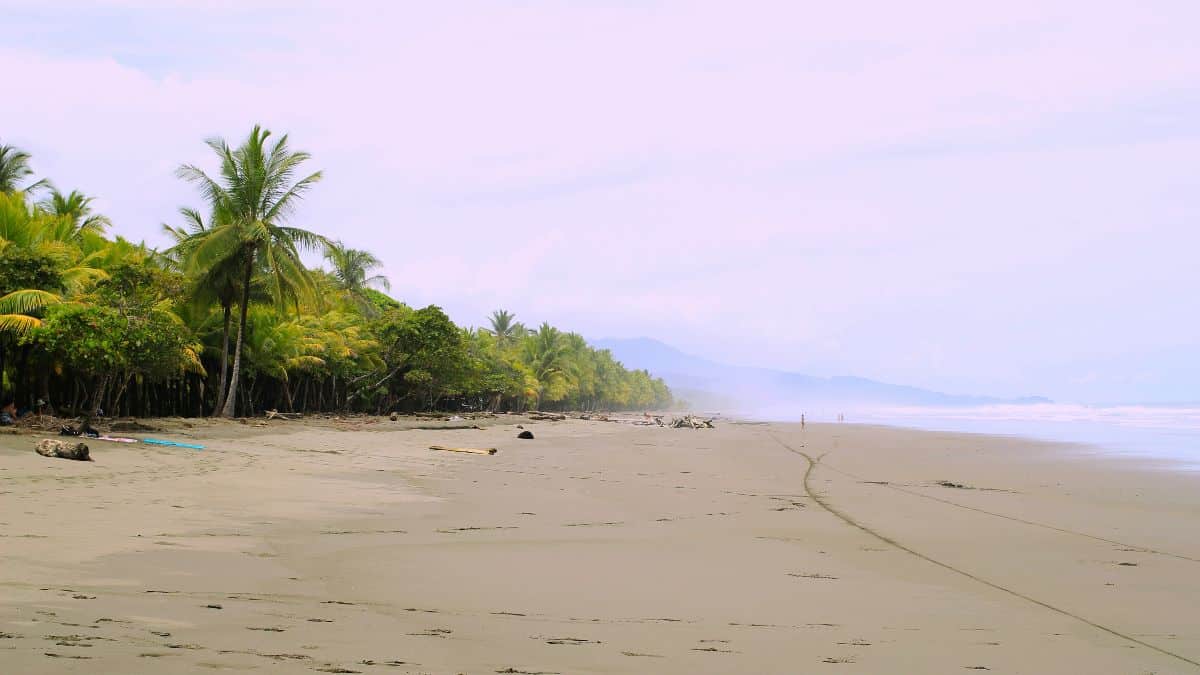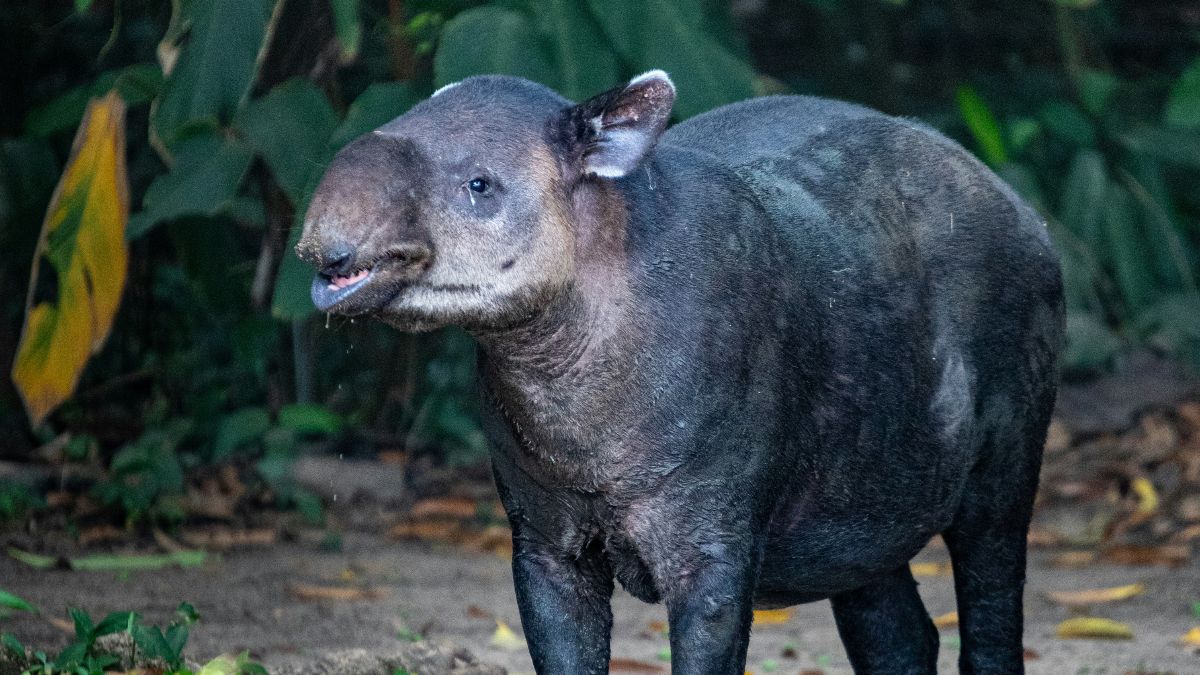Looking for the best spots surfing in Central America? With consistent swells, warm water year-round, and both Pacific and Caribbean coastlines, the region offers something for every surfer — from beginners to seasoned pros. On this World Ocean Day, we break down some of the top surf destinations across the region. This article contains links to Amazon, from which, as an Amazon Associate, this website will earn a small commission if you make any purchases. Visit our Affiliate Disclosure Page for more info.
I love surfing and surf culture, but I’m the first to admit I’m not very good. Living in this part of the world, I should be much better at surfing than I am. But I don’t live at the beach and don’t have the time to get serious. I guess I’m destined to be a less-than-semi-adequate kook forever, which I’ve made my peace with.
But if you’re more serious about your surfing than me, then Central America offers the best surfing on the planet. I’m not exaggerating. Surf culture in Central America has contributed to the region’s economy and tourism industry in a massive way. Surf tourism paved the way in this part of the world many years ago and continues to do so.
Surfing in Central America Attracted the First Tourists
Surfers were in Costa Rica before the eco-tourists. Nicaragua and El Salvador would be bereft of many hotels and restaurants if it wasn’t for surfing. Heck, so would Costa Rica and Panama. In Central American tourism, surfers are the pioneers, showing up down here when the region was at war or mired in unrelenting poverty. Surfers were here when everyone thought you’d have to be insane to be here. But that’s surfers for you.
Now when we talk about the best surfing in Central America, we’re really talking about five countries: Guatemala, El Salvador, Nicaragua, Costa Rica, and Panama, all offering world-class surfing on both Pacific and Caribbean coasts.
Belize and Honduras, not so much. The MesoAmerican reef, the second largest coral reef in the world, keeps the big waves well offshore. Because of this, Belize and Honduras have some of the best diving and snorkeling on the planet but no surf. You can’t have it all, I guess. That said, I’ve heard about a spot in Belize called Long Caye on Glover’s Reef Atoll, although I don’t know anyone who’s actually been. And Honduras must have some spots, somewhere, no? I know that around La Ceiba there are some options but it feels touch and go, and I’ve never heard of anyone who’s surfed in Honduras. When you go online and ask around about surfing in Honduras, most people tell you to just go to El Salvador instead.
So, if you’re looking for the best surfing in Central America, focus on the other five countries. But where should you go?
Central America Surf Communities
There are thousands of beaches and breaks down here. Some famous and some secret. But I want to talk about specific surf towns in Central America. Not so much specific beaches, but the communities that have made – or are making – their names through surfing and surf culture. Because a good surf town should always be about more than the surf.
Sure, surfing is the most important thing, but a proper surf community should be a place where non-surfers can also enjoy. There’s not much worse – especially if you’re a kook like me – than a place where surfing is everything and all anyone does is surf or talk about surfing or watch surf videos.
A good surf town is more than that. It might have started that way, but it’s evolved or is evolving. In other words, a good surf town is a place welcome to everyone from experienced surfer to novices to non-surfers and those who just like to hang out on cool beaches.
Here are our favorite Central America surf towns. We’re not talking much about the actual surf conditions here, please note. This is a brief rundown of the communities themselves.
Best surfing in Guatemala:
We’ve said it before, but Guatemala isn’t the first place many surfers would think of traveling to. Most people come here and never see the ocean, preferring to hang out in Antigua or the Highlands. It’s nothing personal, they just don’t know about Guatemala’s miles of open Pacific coastline. Yet.
Back in the 1990s, the late, great Allan Weisbecker wrote about surfing Guatemala in his seminal book In Search of Captain Zero. He talked of surfing for days at some secret spot near the Mexican border and seeing no-one else in the water, not once. Things have changed since then, but not much.
El Paredón: Guatemala’s Rising Surf Town on the Pacific Coast
El Paredón is the perfect example of a surf town on the rise. Still small, and home to fishermen and salt farmers, the surf scene is bringing opportunity here. Miles of black sand beach face south and these swells come straight up from Antarctica. Watch this place grow. Oh, and check out the nearby village of Sipacate. Good surf there, too.
Monterrico: Surfing Guatemala’s Main Pacific Beach Resort
Monterrico is Guatemala’s main Pacific resort, filling up at weekends with tourists from Guatemala City. Don’t get too excited, though. It’s still small, and the surf is way better in El Paradón. But it’s a beach town, and there’s some surf, and that’s what we’re talking about here.
View this post on Instagram
Best surfing in El Salvador:
If I was playing word association and someone said “El Salvador” to me, I’d say “surf”. There’s nothing else that immediately springs to mind about Central America’s smallest country than surfing. I know there’s a lot more than that, you know, Bukele, bitcoin or whatever, but surfing is the first thing for me at least.
El Salvador’s 307 km of Pacific coastline is jam-packed with surf. It’s one of those countries where surfers really have helped build up the tourist infrastructure. In fact, Surfing in El Salvador is actually government policy. The government of El Salvador sees surfing and attracting surfers as pivotal to its economy, hence the whole Surf City project, which now makes El Salvador a leading country on the global surf scene and a major host of international competitions.
El Tunco: El Salvador’s Lively Surf Town and Backpacker Hub
El Tunco is small but popular. It’s one of Central America’s most typical surf towns with all the culture and vibe that entails. Coming to El Tunco also means access to some of the best surf in the world, not only in the village itself, but in nearby La Libertad, El Zonte, and El Sunzal. Whether you surf or not, if you like a cool backpacker party surf town with killer sunsets, you’ll love El Tunco.
El Cuco: An Up-and-Coming Surf Village in Eastern El Salvador
El Cuco is a tiny village in the east of El Salvador near where the Pacific Ocean meets the Gulf of Fonseca. The actual surf here is in Las Flores, right next door, but in terms of “towns”, El Cuco is what you get. More for beginners/intermediates than experts, this is a great place to learn and practice your surfing. You’ll find a bunch of surf camps happy to teach you. This place is one to watch in the future.
View this post on Instagram
Best surfing in Nicaragua:
Nicaragua is a surfer’s paradise. It’s a perfect example of the power of surf tourism, and how surfers created and shaped the tourist business along the Pacific coast. During the political violence which wracked Nicaragua in 2018 and destroyed a promising tourist industry, surfers kept coming. And through the pandemic and the continued abuses of the Ortega regime, they still kept coming.
It’s those offshores, you see. You can’t keep a surfer away from some of the most consistent year-round offshore winds in the known universe.
San Juan del Sur: Nicaragua’s Quintessential Surfing Paradise
Many will disagree with me and that’s fine, but San Juan del Sur is hands down my personal favorite surf town in Central America. Actually, it’s my favorite beach town in Central America, period. It’s been around forever, since they used the Rio San Juan and Lake Nicaragua to cross the Isthmus before the Panama Canal existed. Mark Twain stayed here, but I don’t think he surfed.
Nowadays San Juan del Sur is a glorious ramshackle collection of clapboard homes, hostels, high-end hotels, and bars/restaurants. The surfing ain’t bad either. Not on the main town beach, no. But from San Juan del Sur you have easy access to top quality surfing beaches like Maderas, Remanso, El Yanke, and others.
Gigante: Tiny Town, Great Waves – Surfing the Emerald Coast
Gigante means “giant” which might well be someone’s idea of a joke. I guess they’re referring to Playa Gigante, the beach, which is huge. The town, if you can call it that, is tiny. What you’ll find here are a few restaurants and bars and some hostels. To the north, you’ll find world-class surf at Colorado, Panga Drops, and Amarillo.
Las Peñitas: Leon’s Laid-Back Surf Village in Northern Nicaragua
Up in the north of Nicaragua, near the colonial town of Leon, is the village of Las Peñitas. You won’t find the hustle and bustle of San Juan del Sur here, but it’s busier than Gigante, especially at weekends. People love this place and often end up staying for a long time – my friend Ben from England once ended up here for five weeks! Anyway, the surf is consistent and you won’t find crowds here. Non-surfers also have the much mellower Poneloya beach next door to chill on if they want.
View this post on Instagram
Best surfing in Costa Rica:
Costa Rica is Central America’s ground zero for all types of tourism, including surf tourism. They’ve been coming here since the 60s and 70s, and built the communities of Tamarindo, Jaco, and many others. Or at least made them into what they are now.
Surfing is so important to Costa Rica that the government has declared October 19th National Surf Day, and called it an “activity of economic importance”. These are not just words – it means that the official government tourism agencies can promote surfing and pump money into it.
Not that surfers need the government to tell them how good it is in Costa Rica, of course. We could name many more surf towns than the six listed below. But we don’t have all day, I’m afraid.
Tamarindo: The Surf Capital of Costa Rica’s Pacific Coast
Tamarindo could be the capital of surf culture in Costa Rica. Once a hamlet of a few shacks at the end of an unpaved road, Tamarindo is now a major Costa Rican tourist town and it’s all because of the surf. Some dislike Tamarindo for its commercialism and call it “Tamagringo”. But love it or hate it (I love it), it’s a true surf town for all the family and all levels, from beginners on up.
Jacó: Costa Rica’s Iconic Surfing Town and Party Hub
Another “love it or hate it” place (and I love it), Jacó is also a major surfing center in Costa Rica, full of bars, restaurants, and hotels of all different qualities. Jacó beach itself is so-so, but right next door, Playa Hermosa offers some of the best surf in the world and hosts international competitions. You’ve also got access to the beaches of Esterillos here, as well as some more discreet spots to the north.
Santa Teresa: Chilled Surf Town on the Nicoya Peninsula
Out on the Nicoya Peninsula, at the end of a bumpy road is the community of Santa Teresa. For those who dislike the hustle and bustle of Tamarindo and Jacó, and seek something a little more mellow, Santa Teresa is it. The place is growing though, don’t get me wrong. Some would say booming. Santa Teresa offers a cool hippy, yoga type of vibe to go with the surf and some of the best restaurants and high-end boutique hotels and vacation rentals in Costa Rica.
Puerto Viejo: Surfing Costa Rica’s Wildest Caribbean Waves
Over on the Caribbean side of Costa Rica, Puerto Viejo has the best, wildest, most hardcore wave in Costa Rica, if not Central America. I mentioned the book In Search of Captain Zero before. Well, Puerto Viejo is where he found Captain Zero and if you want a true rundown on surfing this wave, read the book. The town itself is awesome. No major development like you see on the Pacific Coast, it still retains its Caribbean character, although it is growing.
Dominical: Big Wave Surfing in Southern Costa Rica’s Jungle
Down in the southern zone of Costa Rica is the surf town of Dominical. And when I say surfing town, I mean it. Surfing is king here and the ocean doesn’t mess around. We’re talking big waves. But non-surfers also love Dominical. This is where you’ll find true jungle, with waterfalls and stunning scenery plus the nearby Marino Ballena National Park in Uvita. And there’s enough bars and restaurants in town to keep you busy.
Pavones: The Remote Surf Community at the End of the Road
Further south than Dominical, way way further south, down at the bottom near Panama is the town of Pavones. The aforementioned Allan Weisbecker also wrote a book based on his experiences and life in Pavones called Can’t You Get Along With Anyone?, and we recommend it for anyone interested in this most remote part of Costa Rica. Famous for its super, super, super-long left, Pavones is the quintessential surf town at the end of the road. Forget writing books, they should write songs about this place.
View this post on Instagram
Best surfing in Panama:
Like Guatemala, Panama is a relatively new kid on the block when it comes to surfing. It shouldn’t be though. Panama has the longest coastline in Central America and we bet you’ll see more surfing spots discovered and springing up in the future.
Bocas del Toro: Surfing Panama’s Caribbean Island Archipelagos
Difficult to call Bocas Town in Bocas del Toro a “surf town” in that it’s a regional hub, built out of the 19th and early 20th-century fruit trade. Nowadays, Bocas is a major tourist center for the Bocas del Toro islands of the Caribbean coast of Panama, near the Costa Rican border. You can’t surf directly from Bocas Town but you can stay here, enjoy the amenities, and surf elsewhere on Isla Colon (Playa Bluff, for example) and other islands like Bastimentos (Red Frog Beach, for example).
Santa Catalina: The Surf Community for Serious Surfers
Panama’s Azuero Peninsula sticks out of the bottom of the country into the Pacific Ocean and attracts all sorts of swells. The surfing here is phenomenal but what it lacks is many true surfing towns. We’re talking remote beaches here, with maybe a hostel that might one day become a surf town. Santa Catalina has a little more than that. It’s still small, but large enough for non-surfers to not feel uncomfortable.
View this post on Instagram
And there you have it, our favorite Central American surf towns, offering easy access to the best surfing in Central America. Surfers who know their stuff down here will say we’ve missed a bunch of places, and they’re absolutely correct. But remember, we’re talking about specific communities here, not beaches on their own. An amazing beach backed by a couple of hostels and a bar does not make a surf town, although one day it might become a great one.
FAQ:
- What is the best surf town for beginners in Central America? El Cuco in El Salvador, Las Peñitas in Nicaragua, and Tamarindo in Costa Rica are great options for beginner surfers, with surf camps and mellow waves to learn and practice.
- Which Central American country has the most surf towns? Costa Rica has the most well-established surf towns like Tamarindo, Jaco, Santa Teresa, and many others, thanks to its long history of surf tourism.
- Can non-surfers enjoy Central American surf towns? Absolutely! Many of these communities offer more than just surfing, with great restaurants, bars, beaches, and natural attractions for non-surfers to enjoy as well.
- Are there any surf towns on the Caribbean side of Central America? Yes, Puerto Viejo in Costa Rica and Bocas del Toro in Panama are both popular surf destinations on the Caribbean side, offering a different vibe and culture.
- When is the best time to surf in Central America? On the Pacific side, the rainy season – from May to November is generally the best time, as this is when those winter swells come up from from the southern hemisphere. That said, in southern Nicaragua and northern Costa Rica, the months of January-March are also excellent due to offshore winds off Lake Nicaragua. December-April is also best on the Caribbean side.
James Dyde is the editor of CentralAmerica.com. He lives in Escazu, Costa Rica.




